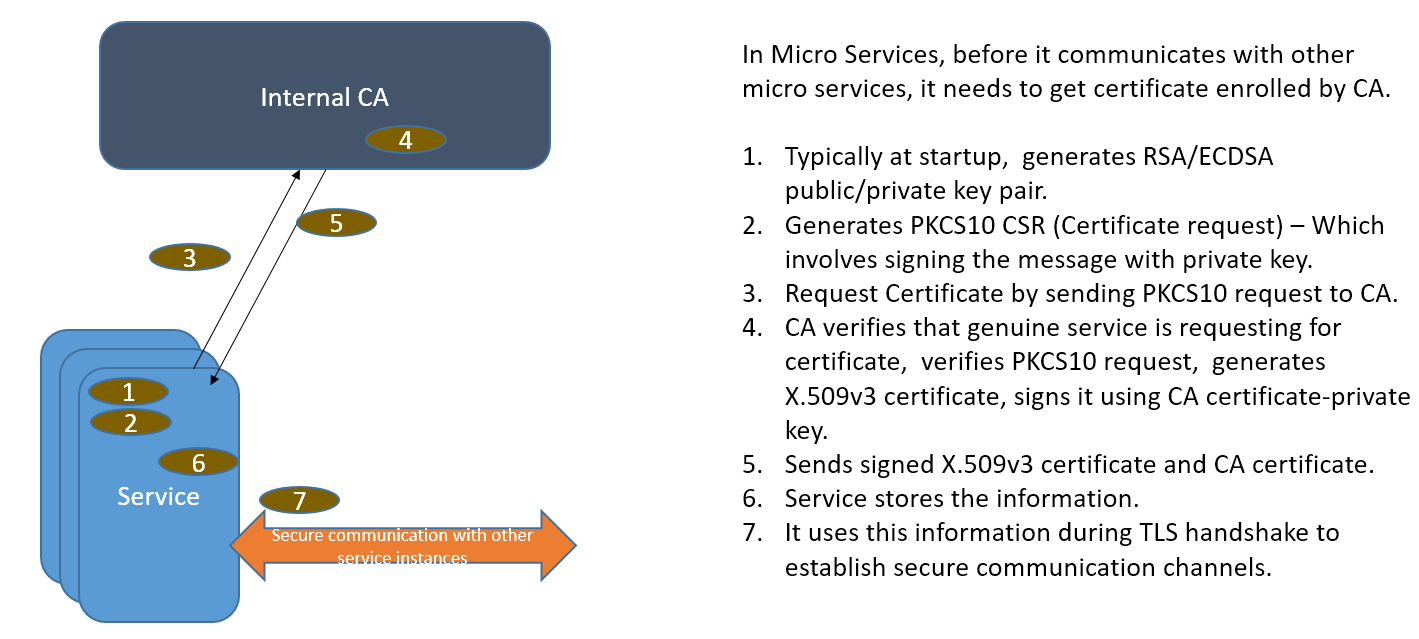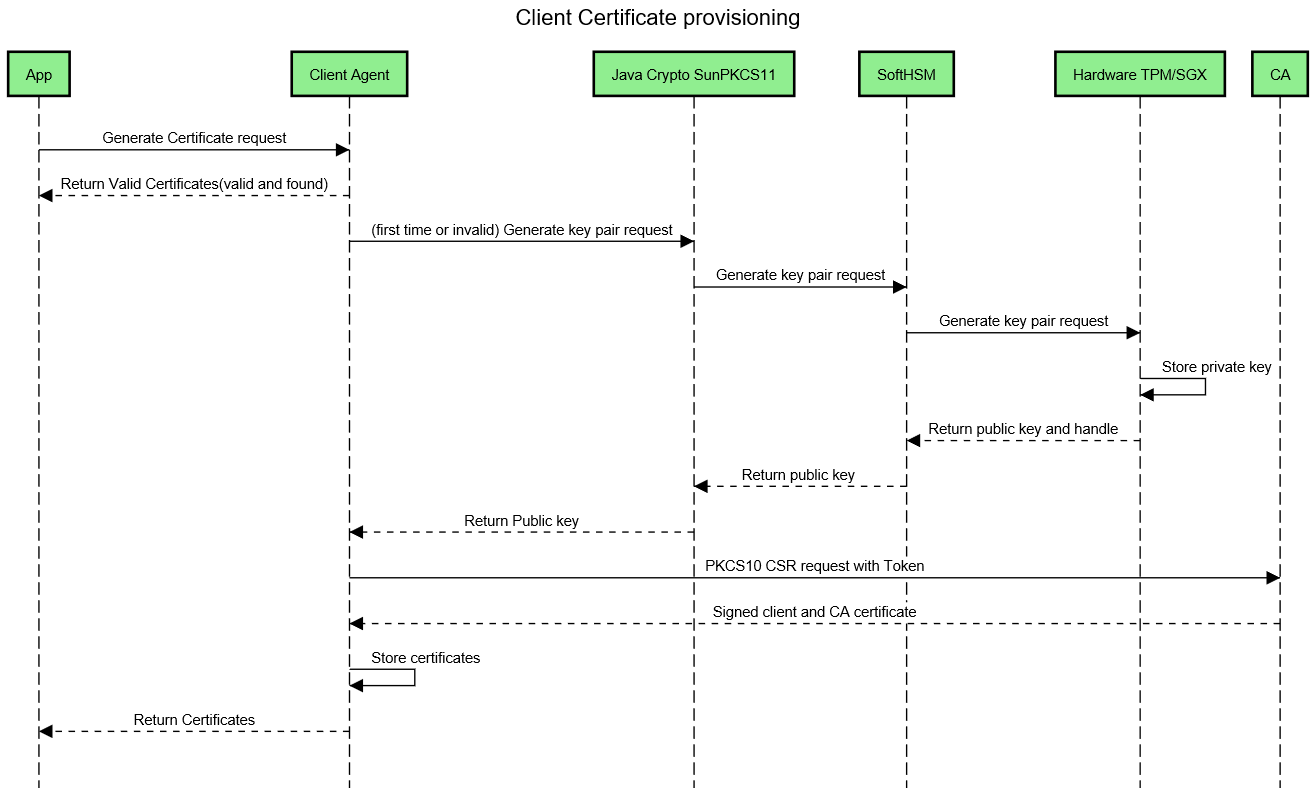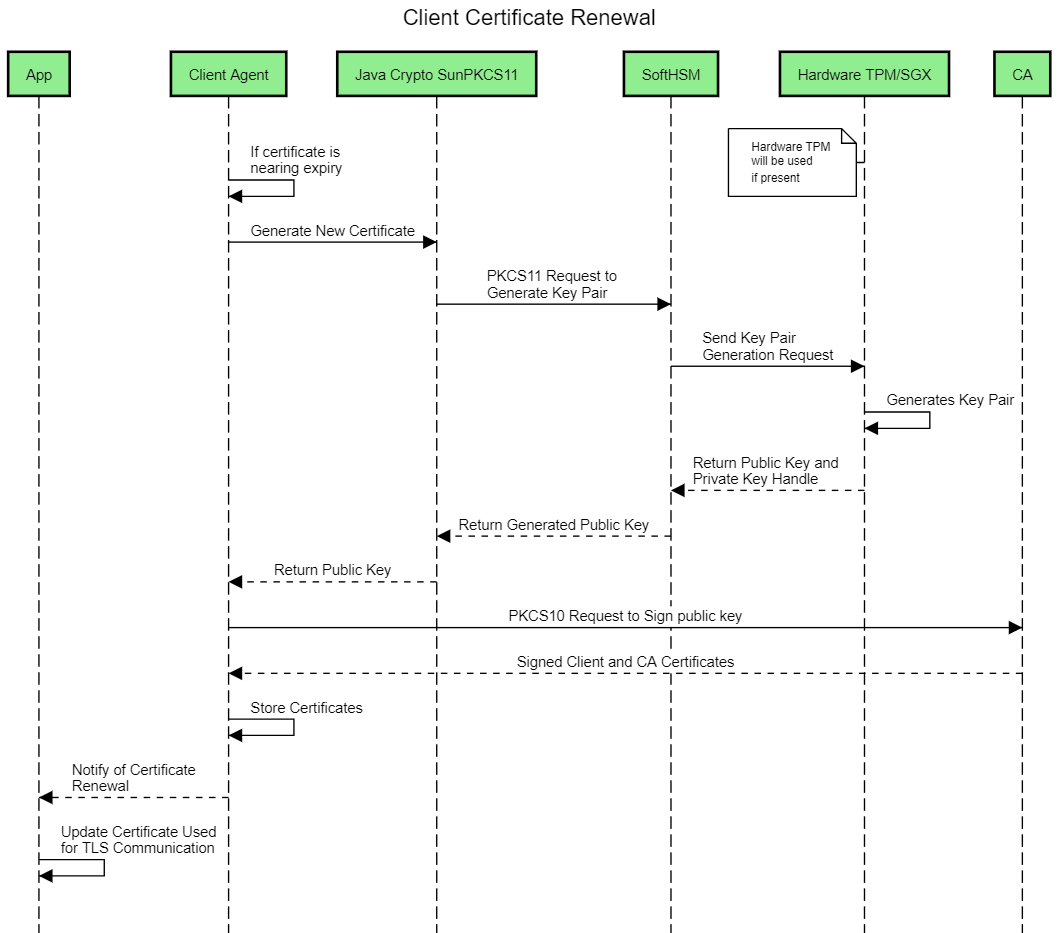Project Name:
- Proposed name for the project:
Certificate and Secret Management Service Proposed name for the repository : csm
Project description:
This project proposal tries address two areas in the ONAP deployment structure from a security perspective.
- Secure Communication between services.
- Need description
ONAP consists of multiple micro services which talk to each other.
There are two types of communication.- REST API based communication.
- DMAPP publish/subscriber based communication.
Since the communication is mostly over HTTP, there is a need to protect services from:
- Bad actors stealing the data on the wire.
- Receiving messages from bad actors
- Requirement:
- Enable TLS 1.2+ for securing communication among the services. Java and Python libraries do support this functionality, but easy certificate provisioning is required for Mutual TLS. This project aims to simplify PKI - certificate provisioning via simple, secure CA service, store private keys securely using hardware security.
- Need description
- Storage of sensitive information such as passwords.
- Need description
- Many services in ONAP use password based authentication. Eg: Database servers, publish/subscribe brokers etc.
- Passwords are stored in plain text files in many services.
- With multiple instances of these services, the attach surface area becomes very big.
- Hence there is a need to ensure that attack surface related to password exposure is reduced.
- Requirement:
- Need for secure secret management. Services are expected to get the secret only on needed basis using secret reference and remove the secrets once they are used up.
- Need description
This project aims to provide solutions to the above needs by:
- Provide certificate management service (CA Service) to provision signed certificates required for Mutual TLS.
- Provide certificate request agent SDK
- Provide hardware security plugin for storing private keys and for performing crypto operations that require private keys.
- GUI/CLI for Certificate Management Service
- Provide secret service for adding/deleting/updating/reading secrets.
- Provide secret client agent SDK
- GUI/CLI for Secret Management Service.
Scope:
Internal CA Broker Service
The proposed project will provide an Internal CA Broker Service which will be used for certificate enrollment by micro services. The ultimate goal is to make sure that all micro services communicate securely between each other using the Interal CA for enrollment and then use TLS to establish secure communication channels between each other.
The CA Broker Service will support the following:
- RESTful API support for Certificate Request Operations by micro services
- Generate Certificate
- Revocation of Certificate
- Usage report updates
- Token Authentication
- An Admin interface
- That will generate a self signed CA
- Upload any admin generated CA Cert + Private Key pair
- Usage reports on each key
- Revoke certificates
- Get CA Certificate in PEM/DER format
- Token service to provide temporary tokens
There will also be a Client that will be part of the project written in either Python or Java that will be used to communicate with the CA Broker Service to enroll certificates.
It will have the following roles/abilities:
- Generate RSA/ECDSA key pair using PKCS11
- Securely store the private key.
- Store the private key using TPM if it is available
- PKCS10 CSR generation
- Communicates with the previously described CA Broker Service over REST API
- Periodically generates a usage report
- Certificate Renewal
- Discovery of Internal CA Broker Service
The below diagram illustrates how a micro service will communicate with the CA Broker Service to enroll its certificate.
This diagram shows mapping of certificate provisioing in ONAP context.
The below diagram details the architechture blocks used previously in detail:
Use Case Sequence Diagrams
Secret Service
The project will also provide a Secret Service with the following features and capabilities:
- RESTful API support
- ADD
- UPDATE
- DELETE
- Token based authentication for above requests
- username and password based authentication will also be supported
- Securely store secrets using AES encryption
- Use TPM/SGX for key storage if available
The below diagram illustrates how a micro service will use the secret client agent to talk to the secret service to store or retrieve passwords.
Architecture Alignment:
CSM is a common service across ONAP components.
Other Information:
- TBD
Key Project Facts:
Primary Contact : Srinivasa Addepalli
Facts | Info |
|---|---|
| PTL (first and last name) | |
| Jira Project Name | TBD |
| Jira Key | TBD |
| Project ID | TBD |
| Link to Wiki Space | TBD |
Release Components Name:
Note: refer to existing project for details on how to fill out this table
Components Name | Components Repository name | Maven Group ID | Components Description |
|---|---|---|---|
| org.onap. | |||
Resources committed to the Release:
Note 1: No more than 5 committers per project. Balance the committers list and avoid members representing only one company.
Note 2: It is critical to complete all the information requested, that we help to fast forward the onboarding process.
Role | First Name Last Name | Linux Foundation ID | Email Address | Location |
|---|---|---|---|---|
| PTL | Kiran Kamineni | kirankamineni | kiran.k.kamineni@intel.com | Santa Clara, CA |
| Committers | Kiran Kamineni | kirankamineni | kiran.k.kamineni@intel.com | Santa Clara, CA |
| Manjunath Ranganathaiah | ||||
Ning Sun | ||||
| Girish Havaldar | ||||
| Vamshi Namilikonda | ||||
| Contributors | ||||








